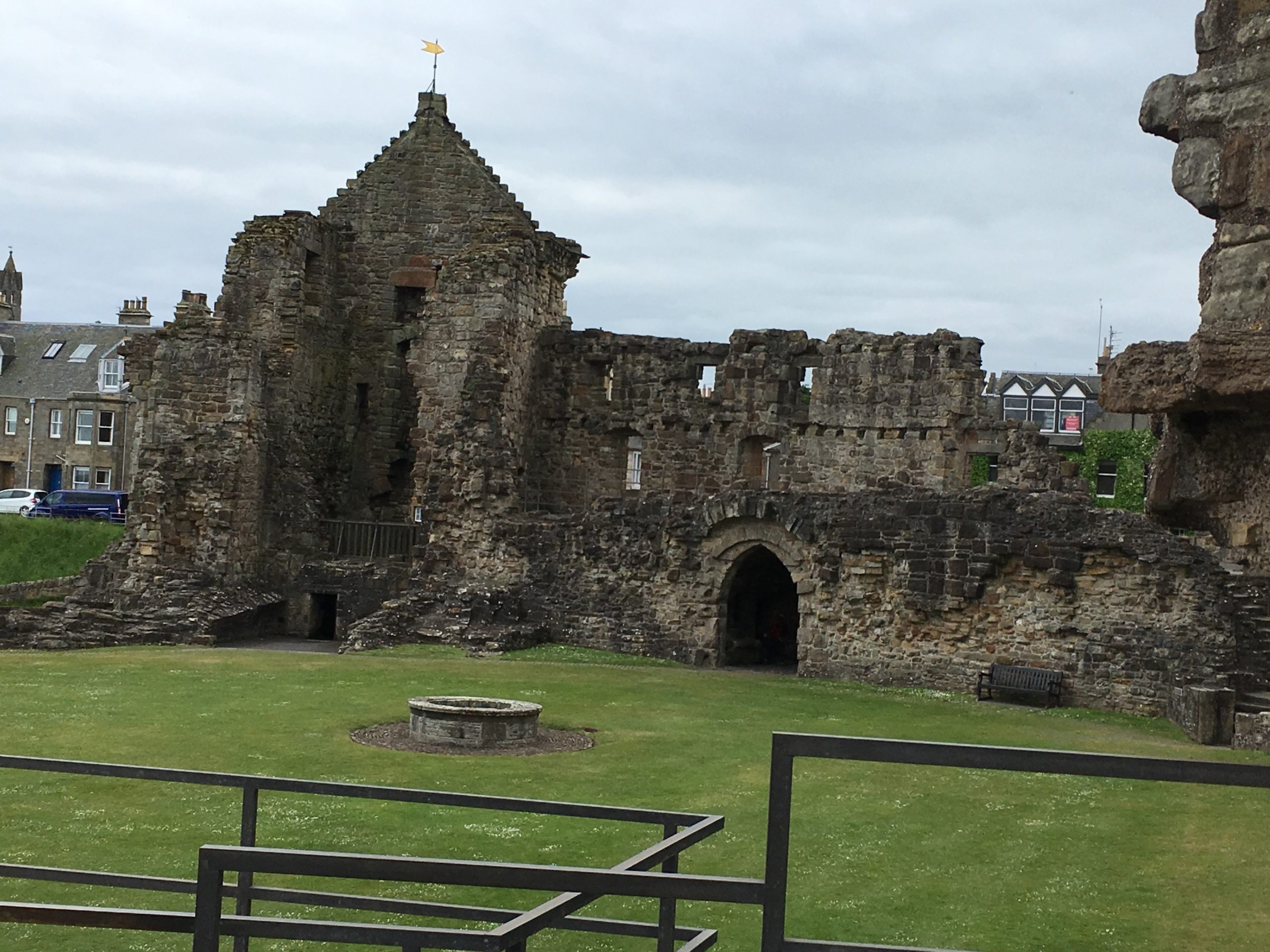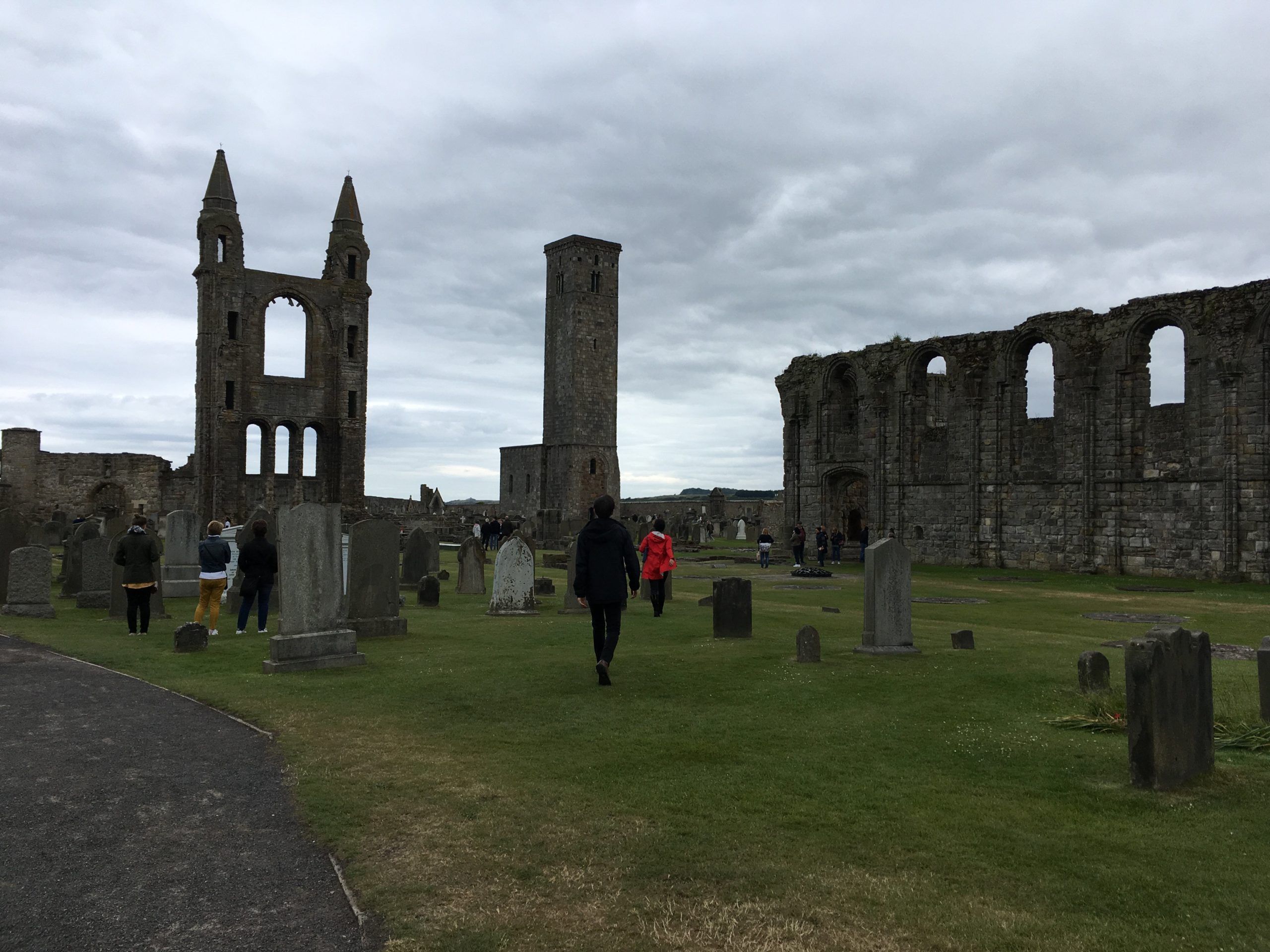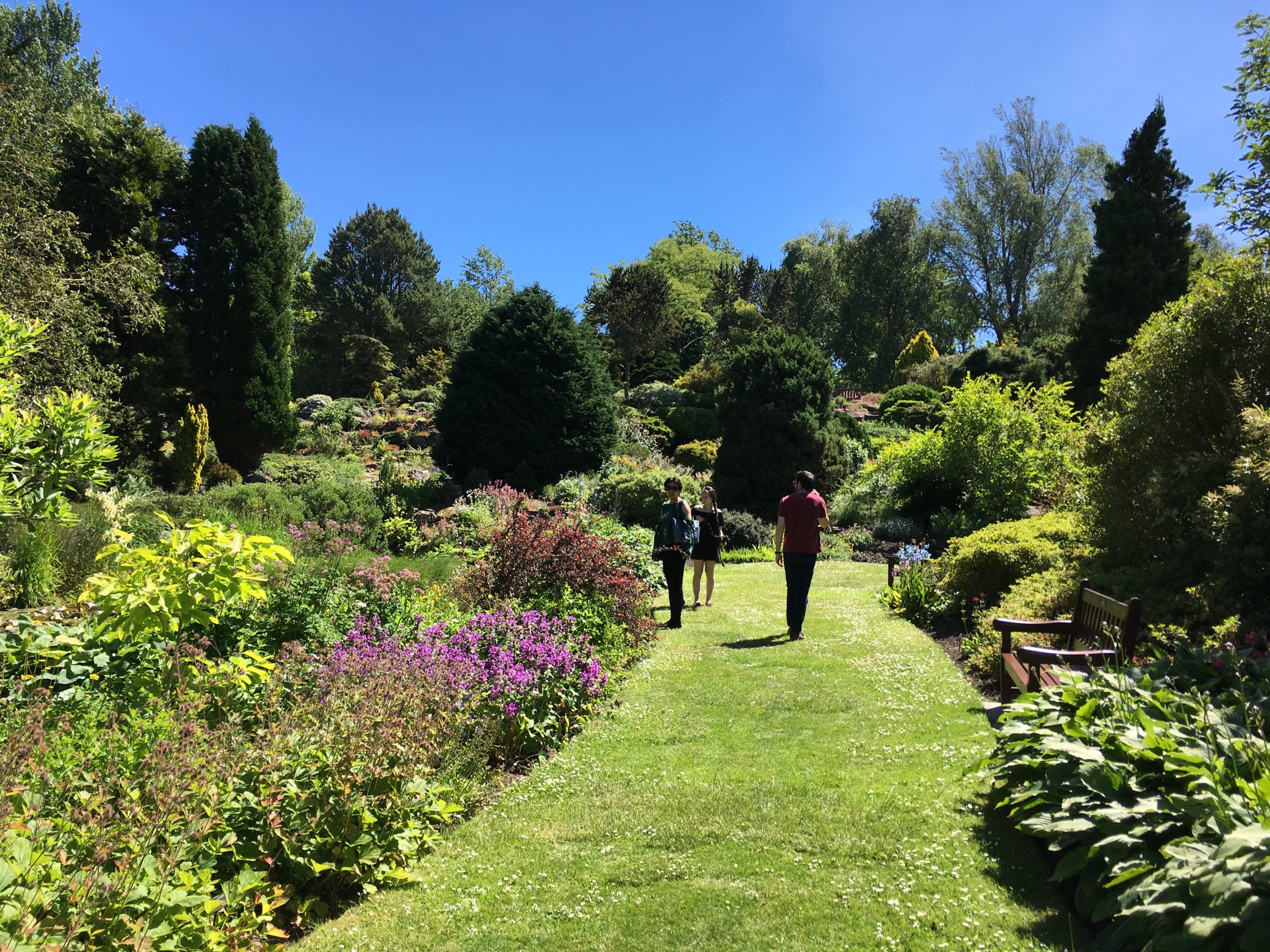
By May S. Ruiz
St Andrews, in Scotland, is notorious for horizontal rains and arctic winds. My first visit there, in July of 2013, was marked by sporadic downpours and grey skies. The following year, I was there for three weeks of mostly gloomy weather in the middle of August. Last year, there was a hurricane when I got there during the height of summer.
It was such a delightful surprise to spend the greater part of June this year in St Andrews and experience sunlight. In fact, the sun rose at 3:00 in the morning and didn’t set until past 10:00 at night. I just couldn’t get enough of it; I availed of the glorious weather by taking in the outdoor sights.
St Andrews Castle is actually in ruins so a tour of it is generally outside. What remains of it are the walls, the tower, the ‘bottle dungeon,’ and the mine and counter-mine. But its stunning location right next to the North Sea makes it a breathtaking tourist destination.
Unlike other European castles, which were primarily residences of the monarchy, St Andrews Castle was an ecclesiastic center inhabited by the powerful bishops and archbishops of Scotland in the 1200s and 1300s.
Its history is as remarkable, bloody, and controversial as its occupants. In the 1400s the Scottish royals were associated with the bishops and, in consequence, with the castle. King James I was educated by Bishop Henry Wardlaw, who founded the University of St Andrews in 1413. James II chose a later bishop, James Kennedy, to be his advisor. In 1445, James III was born in the castle.

St Andrews Castle was likewise used as a prison which housed not only local criminals under the bishop’s jurisdiction but other prominent figures, including David Stuart (the Duke of Rothesay, heir apparent to the throne of Great Britain which, today, is Prince Charles) in 1402, and Duke Murdoch in 1425. In 1478, Archbishop Patrick Graham was declared insane and was confined in his own castle.
During the Scottish Reformation, St Andrews Castle was the site of religious persecution when Scottish Protestants were punished with cruel and public deaths. In 1546, David Beaton, the Archbishop of Glasgow, imprisoned Protestant preacher George Wishart in the tower and on March 1, ordered him burned at stake in front of the castle walls. Wishart supporters avenged his death on May 26 when they gained entry, overcame the garrison, murdered Cardinal Beaton, and hung his body from his window on the castle’s front.
Protestants used the castle as a shelter where they established the first Protestant congregation in Scotland and the Regent James Hamilton ordered a long siege. In 1546, attackers dug a mine through solid rock to attack while defenders tunneled a counter-mine.
In 1547, John Knox, the leader of the Scottish Reformation, entered the castle during a ceasefire and served as the garrison’s preacher for the remainder of the siege. This temporary peace ended when the French fleet bombarded the castle, which fell unprotected.
St Andrews Castle was rebuilt by Archbishop John Hamilton but, after his death in 1571, it was inhabited by a succession of constables. Attempts to reestablish religious power in Scotland failed and, in 1689, William of Orange abolished the office of the bishop. The castle was rendered useless and quickly deteriorated; parts of it were used in repairing the pier.

The rare bright and warm day was the perfect antidote to what I learned about the castle. I headed out to St Andrews Cathedral but its history isn’t any cheerier than the castle’s. Built in 1158, it was the base of the Medieval Catholic Church in Scotland and the seat of the Archdiocese of St Andrews.
Inevitably, its past is intricately linked with the Castle. Incited by the preaching of John Knox, a Protestant mob ransacked St Andrews Cathedral during the Scottish Reformation and completely destroyed its interior. Whatever was left of it was used as building material for the town.
Long ago the largest cathedral and most magnificent church in Scotland, what stands for St Andrews Cathedral today are the ruins of the nave and St Rule’s Tower. Nonetheless, it continues to be a significant reminder of the influence it once wielded as the symbol of Catholicism.
Tourists looking to find a destination that doesn’t recall depressing times would do well to head to St Andrews Botanic Garden, as I did. Located on the southern edge of town at Kinnes Burn, it is sometimes referred to as St Andrews’ hidden gem. And for good reason.
The modest entrance to the garden is in sharp contrast to that of The Huntington‘s in San Marino, which has a tall, imposing gate that suggests what to expect within. Visitors to St Andrews Botanic Garden, however, will be pleasantly surprised to discover an 18-acre paradise.

Previously founded by the University of St Andrews in 1889 on the grounds of St Mary’s College, it was moved to its current location in the early 1960s. Mindful of the harsh Scottish climate, the designer structured a dense barrier of pine trees along the western edge, with many shrubs and trees around the site, to provide protection for the plants.
It is a wonderland of native and exotic plants laid out in zones of woodland, meadow, shrubbery herbaceous bedding, ponds, a rockery, and a butterfly house. In the greenhouses, I was thrilled to find myself surrounded by familiar plants – the very same ones in my backyard. There were anthuriums and lilies, cacti and aloe veras, birds of paradise and sago palms. It was easy to be deceived into thinking I was in Pasadena.
I marveled at the ponds with small waterfalls, walked on the impressive expanse of green meadow, and climbed up a rockery. This is a side of St Andrews I had never seen before and it offered me a vastly different perspective.
St Andrews doesn’t only have centuries-old, stone-clad structures; it also has abundant, green flora. The town isn’t all about honoring and preserving the past, but also about building and tending the future. The image that conjures is as heartwarming as it is astonishing.





